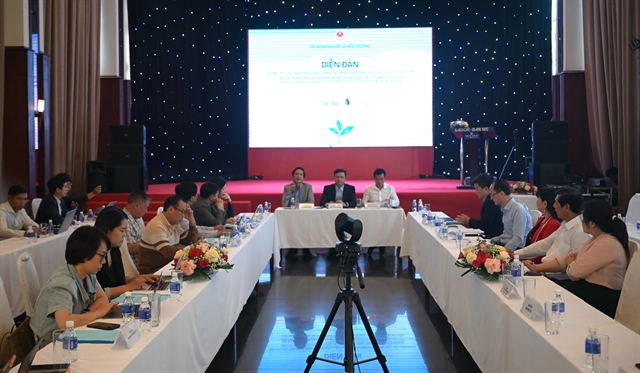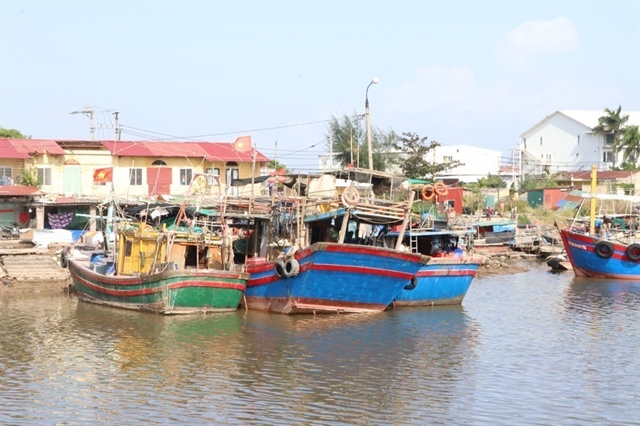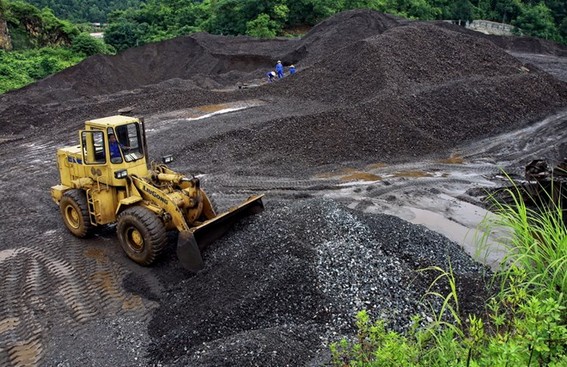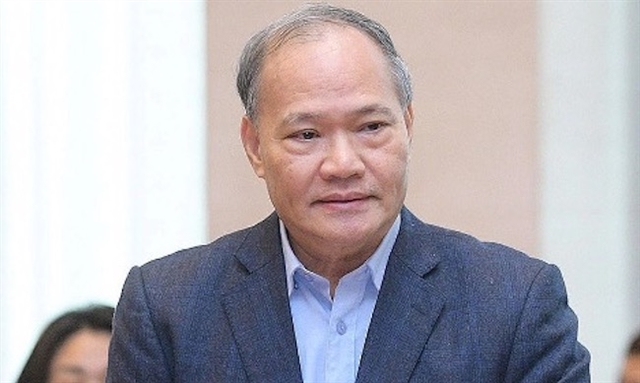 Environment
Environment

Lại Hồng Thanh, deputy head of General Department of Geology and Minerals and Nguyễn Thế Chinh, head of Institute of Strategy and Policy on Natural Resources and Environment, talk to the Vietnamese Government website about mineral resource management

|
Lại Hồng Thanh, deputy head of General Department of Geology and Minerals and Nguyễn Thế Chinh, head of Institute of Strategy and Policy on Natural Resources and Environment, talk to the Vietnamese Government website about mineral resource management
The State has issued policies, regulations and implemented projects to inspect mineral geology to manage diversified sources of minerals. How effective are these policies?
Lại Hồng Thanh: The system of policies and laws on minerals has experienced many stages. We have the Ordinance on Mineral Resources 1989, the Mineral Law 1996 which was then amended and supplemented in 2005. In 2010, we approved the new Mineral Law which took effect from July 2011.
Prime Minister Nguyen Xuan Phuc signed Decree No 23 on February 24, 2020 on the management of riverbed sand and gravel. This is the only decree that regulates a particular mineral.
The Ministry of Natural Resources and Environment (MONRE) and other ministries and agencies have developed and issued about 50 circulars and joint circulars.
After the Mineral Law came into effect in 2011, the system of legal documents on minerals was basically completed. This is an important legal corridor and basis for us to manage and save mineral resources and to bring our country's mining industry towards sustainable development.
Many say that policies and laws on managing mineral resources are inconsistent and impractical. What do you think about this assessment?
Nguyễn Thế Chinh: In the context of shifting from centralised planning (which means all management belongs to the State) to a market economy, we can't avoid shortcomings and need to handle them step by step.
We have used ordinances, changed laws and plan to implement a mineral strategy in the next 10 years. We are studying to address shortcomings to make the best use of mineral resources and ensure sustainable development.
The fact that the potential of resources is not fully assessed while some sources of minerals are overexploited is a concern. What do you think about this problem?
Lại Hồng Thanh: In 2010 we had the Mineral Law. In 2011, the PM approved a mineral strategy until 2020 with a vision towards 2030.
The Ministry of Industry and Trade and Ministry of Construction have developed and submitted to the PM more than 14 plans for more than 40 types of minerals.
The plans serve as a good foundation for better management of mineral resources. However, using and managing mineral resources still has a lot of shortcomings.
We must consider mineral resources as public property and assess State property through inspection. Based on that, we should propose mineral resource exploitation and management strategies.
Because mineral resources are public property, the State must hold responsibility for formulating the strategy.
Illegal mineral exploitation and exports have been increasing. Is that because punishments for violations are not strict enough? What additional penalties are needed to end violations?
Lại Hồng Thanh: Before the Mineral Law came into force in 2010, mineral exploitation violations were punished following the directions of Government decrees. However, the punishments were not strict enough.
After that, the MONRE proposed the Government stiffen the penalties.
The decree which was issued in 2013 listed 60 mineral resource management and exploitation violations that had not been mentioned in regulations. It also stiffened punishments for violators.
In 2017, the 2013 decree was replaced by a new decree.
Since the penalties were issued, illegal mineral exploitation activities have decreased every year.
The number of localities reporting illegal activities and quantities of exploited mineral types also decreased. This has proved the efficiency of the punishments.
To meet practical requirements now, the MONRE is collecting feedback from the Government’s members to prepare for a new decree to replace the one from 2017.
Việt Nam has set the general target of using and exploiting resources effectively and sustainably in 2020. What is the most important target and what solutions should be taken to realise it?
Lại Hồng Thanh: To realise the target, the MONRE and the General Department of Geology and Minerals have carried out several tasks.
In 2016, the ministry implemented and assessed the implementation of Politburo Resolution 02 on the mining industry strategy until 2020, with a vision towards 2030.
The MONRE has evaluated the mineral strategy implementation since 2011 and submitted to the PM a proposal to amend and adjust the strategy during 2030-50.
The ministry has assigned the General Department of Geology and Minerals to review and make statistics on solid mineral resources nationwide till the end of 2020. VNS




